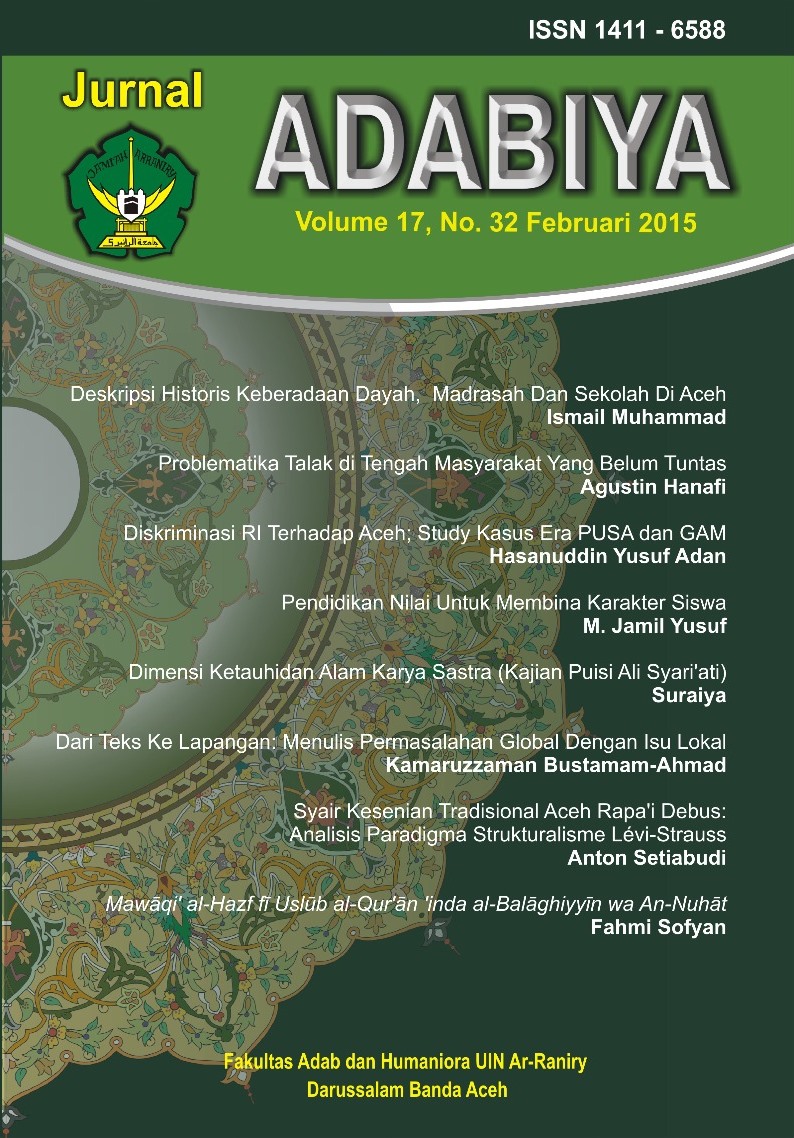References
M.C. Ricklefs, Sejarah Indonesia Modern, terj. Dharmono Hardjowidjono (Yogyakarta :Gadjah Mada Universiry Press, 1990), hal. 3
Mitsua Nakamura, The Grescent Arises over the Banyan Tree; A Study of The Muhammadiyah Movement in a Central Javanes Town, (Yogyakarta : GadjahMada University Prees, 1993), hal. 1-2.
AzyumardiAzra, JaringanUlama: Timur Tengah danKepulauan Nusantara Abad XVII dan XVIII, (Bandung :Mizan, 1999), hal. 24.
Ahmad Mansur Suryanegara, MenemukanSejarah; WacanaPergerakan Islam di Indonesia, (Bandung :Mizan, 1998), hal. 73.
G.W.J. Drewes, “New Light on the Coming of Islam Indonesiaâ€dalam Readings on Islam in Southeast Asia, (Singapore : Institute of Southeast Asia Studies, 1983), hal. 8
C. SnouckHurgronje, “Arti Agama Islam bagiPenganutnya di HindiaBelanda, dalam Kumpulan Karangan Snouck Hurgronje, JilidnVII, terj.Sultan MaimundanRahayu S. Hidayat (Jakarta : INIS, 1994, hal. 6
Ibid.,hal. 7.
AzyumardiAzra, JaringanUlama…., hal. 24.
AzyumardiAzra, Islam Nusantara; Jaringan Global danLokal (Bandung :Mizan, 2002), hal. 25.
AzyumardiAza, JaringanUlama…hal. 25-26.
Ibid. hal 26.
A.Hasjmy, SejarahMasukdanBerkembangnya Islam di Indonesia (Bandung :AlMa’arif, 1993), hal. 7.
UkaTjandrasasmita, PertumbuhandanPerkembangan Kota-Kota Muslim di Indonesia; Dari Abad XIII sampai XVIII Masehi (Kudus :menara Kudus, 2000), hal. 17.
George FadloHourani, Arab Seafarings in the IndiansOcean in Ancient and Eraly Medieval Times (Princon : New Jersey University Prees, 1951). Hal. 62.
Azyumardi Azra, Islam Nusantara….hal. 28.
P.A. Hoesein Djajadiningrat, “Islam di Indonesia†dan Kenneth W.Morgan, Islam Jalan Lurus, Terj.Abu Salamah dan Chaidir Anwar (Jakarta : Pustaka Jaya, 1986), hal. 426-7.
Suwedi Montana, Pengenalan Awal Bahasa Arab sebagai Indikator Pembawa Agama Islam di Indonesia†dalam Aspects of Indonesians Archeology, Nomor 16 (Jakarta : Pusat Arkeologi Nasional, 194/5), hal. 16.
Ahmad Mansur Suryanegara, Menemukan Sejarah; Wacana Pergerakan Islam di Indonesia (Bandung : Mizan, 1998), hal. 91.
Ibid.,hal. 90.
H.J. de Graaf, dkk, China Muslim di Jawa Abad XV dan XVI; AntaraHistoritasdanMitos, terj.Alfajri, (Yogyakarta : Tiara wacanaYogya, 1998), hal. 101.
Marwati Djoened Pusponegoro dan Nugroho Notosusanto, Sejarah Nasional Indonesia,Jilid III, (Jakarta: Balai Pustaka, 1990), hal. 181.
Ibid.,hal. 183
UkaTjandrasasmita, PertumbuhandanPerkembangan Kota-Kota Muslim di Indonesia, hal. 19.
HasanMu’arifAmbary, MenemukanPeradaban; Jejak Arkeologis dan Historis Islam Indonesia (Jakarta: Logos WacanaIlmu, 1988), hal. 55-60.
Denys Lombard, Nusa JawaSilangBudaya; batas-Batas Pembaratan, KajianSejarahTerpadu, terj.WinarsihPartaningratArifin, dkk, (Jakarta :GramediaPustaka, 2005), hal. xix.
LathufulKhuluq, “IslamisasipadaMasaPemerintahan Sultan Agung (1613-1646)â€, JurnalPenelitian Agama, Nomor 20 Tahun VII, Sepember-Desember 1988, hal. 118-138.
Sartono Kartodirdjo, Pengantar Sejarah Indonesia Baru : 1500-1900 (Jakarta : PT Gamedia Pustaka Utama, 1992), hal. 26.
Ahmad mansurSuryanegara, MenemukanSejarah…, hal. 93-4.
H.J. de Graaf, “South-East Asian Islam to Eighteenth Century†dalamThe Cambridge Hostory of Islam, Volume 2A, (Cambridge: Cambridge University Press, 1987), hal. 123.
M.C. Ricklefs, Sejarah Indonesia Modern, hal. 20.
Ibid.,hal. 74.
Martin van Bruinessen, KitabKuning, PesantrendanTarekat :Tradisi-Tradisi Islam di Indonesia (BandungMizan 1995), hal. 187.
Ibid.,hal. 188.
Maksum, Madrasah; Sejarah dan perkembangannya, (Jakarta : Logos Wacan Ilmu, 2000), hal. 82.
Hasan Mu’arif Ambary,â€Makam-Makam Kesultanan dari Para Wali Penyebar islam di Pulau Jawa†Dalam Aspects of Indonesian Archeology, Nomor 12 (Jakarta : Pusat Penelitian Arkeologi Nasional, 1991), hal. 1.
Fachry Ali dan Bahtiar Effendi,Merambah Jalan baru Islam; Rekonstruksi Pemikiran Islam Indonesia Masa Orde Baru (Bandung : Mizan, 1986), hal. 32.
Ibid.,hal. 32-4.



